Pierrepont and Thoresby Hall (the first building).
Above: Details from Tillemans' painting of 1725 showing Evelyn the 2nd Duke of Kingston hunting by Thoresby Lake on which his boats are visible. The original Thoresby Hall in the background would burn down twenty years later, c.1745, and a second Hall built on the same lakeside site.
Above: The first Thoresby Hall from a print by J. Walker.
Robert de Pierrepont came to England with William the Conqueror during the Norman Conquest. In 1500 his descendants built the present Holme Pierrepont. In the first part of the 17th Century, Sir Robert Pierrepont (1585 - 1643), 1st Earl of Kingston upon Hull, bought Thoresby from William Lodge, an Alderman of London, for his second son William.
William Pierrepont (1607 - 1679), then spent £1000 a year aquiring land around Thoresby between 1633 and 1643. He was a Parliamentarian, referred to as "William the Wise" because his opinions were much valued by noblemen of the day. His moderate attitude and respect for the King, made him an obvious choice for mediator and negotiator between Charles 1st and the Roundhead movement, and this he did on more than one occasion. It is a known fact that Oliver Cromwell himself spent the night at Thoresby in 1651 on his way to the Battle of Worcester at Evesham.
Robert's first son Henry Pierrepont (William's elder brother) was the 2nd Earl of Kingston upon Hull. When Henry died without heir in 1680, his great nephew Robert became 3nd Earl of Kingston upon Hull. When Robert also died without heir his brother William became the 4th Earl of Kingston upon Hull, and that's where things become a little clearer.
William Pierrepont (1662 - 1690), 4th Earl of Kingston, obtained a further 1,270 acres of land for £7,100, combined them with what he already possessed in Perlethorpe and Thoresby, and formed Thoresby Park. Soon after this in 1683 he built the original Thoresby Hall (a.k.a. Thoresby House).
William the 4th Earl also died without heir, and so was succeeded by his brother Evelyn Pierrepont (1665 - 1726), the 5th Earl of Kingston upon Hull, later upgraded to 1st Duke of Kingston upon Hull in 1715. Evelyn's only son died of smallpox and so he was succeeded by his grandson, also called Evelyn, the 2nd Duke of Kingston. It is this 2nd Duke who can be seen in the full version of the Tillemans painting edited below, and it was he who extended Thoresby Lake and built the second Hall after the first was destroyed by fire.
A mansion already existed by the lake, built c.1590, with some documents describing it as Elizabethan in character. But as it was built before the 4th Earl established Thoresby Park / Thoresby Estate, it doesn't merit the title Thoresby House. It was this mansion which William Pierrepont 2nd Earl of Kingston replaced in 1683 when building the original Thoresby Hall. This was a rectangular red brick building with stone dressings, designed by William Tallman who would go on to design Chatsworth House. It had two storeys plus an attic, featured 13 bays along its front, and was clearly influenced in it design by the Italian Palaces. In 1738 The Kennels were built about half a mile eastward of the Hall.
On 4th March 1745, only 58 years after it was built, this Thoresby Hall was badly damaged by fire, and much property lost. However, during the 22 years between the fire and the building of a second Hall, Evelyn the 2nd Duke of Kingston certainly had long periods of residence on Thoresby Estate, monitoring his extensions to the Lake, so quite possibly parts of the Hall were still habitable. Alternatively he may have resided at The Kennels.
See the post-millennial Thoresby House on THIS LINK.
Labels: Duke of Kingston, Earl of Kingston, Manvers, Pierrepont, Thoresby Hall, Thoresby Park






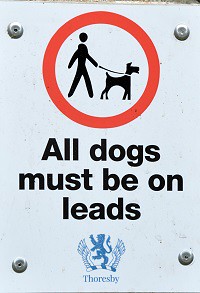 Thoresby Hall Hotel, Sherwood Forest and Clumber Park are recommended attractions for a day trip or short vacation. The
Dukeries area is of keen historic interest. NOTE: Apart from public domain postcards and brochures ALL photographs herein are copyright Ian Gordon Craig, exclusive permission granted to Thoresby Estate for their use elsewhere.
Thoresby Hall Hotel, Sherwood Forest and Clumber Park are recommended attractions for a day trip or short vacation. The
Dukeries area is of keen historic interest. NOTE: Apart from public domain postcards and brochures ALL photographs herein are copyright Ian Gordon Craig, exclusive permission granted to Thoresby Estate for their use elsewhere.
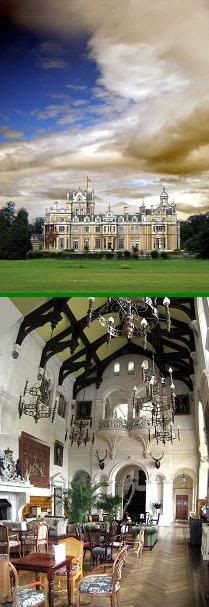 Thoresby Hall as photographed Summer 2009, now a successful Warners Hotel.
Thoresby Hall as photographed Summer 2009, now a successful Warners Hotel.
 Robert Pierrepont (1584 - 1643), 1st Earl of Kingston upon Hull, bought Thoresby for his second son William.
Robert Pierrepont (1584 - 1643), 1st Earl of Kingston upon Hull, bought Thoresby for his second son William.
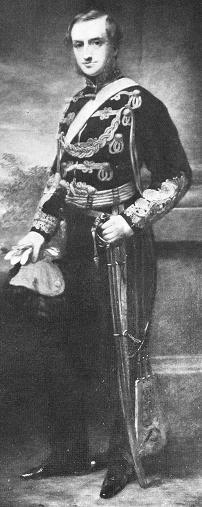 Sydney William Herbert Pierrepont (1825 - 1900), 3rd Earl Manvers, built the present Thoresby Hall, St John's Church,
Perlethorpe School, and generally shaped Thoresby Estate as it looks today.
Sydney William Herbert Pierrepont (1825 - 1900), 3rd Earl Manvers, built the present Thoresby Hall, St John's Church,
Perlethorpe School, and generally shaped Thoresby Estate as it looks today.
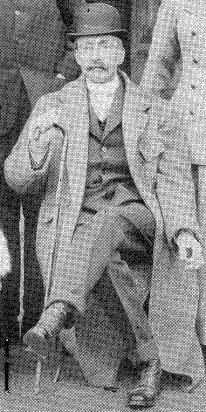 The 4th Earl Manvers (Died 1926).
The 4th Earl Manvers (Died 1926).
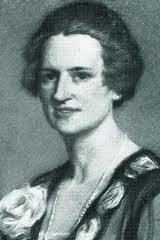 Countess Manvers (d.1984). Examples of her paintings are always on show at Thoresby Gallery.
Countess Manvers (d.1984). Examples of her paintings are always on show at Thoresby Gallery.
 ABOVE: The statue of Robin Hood in the courtyard at Thoresby Hall, by Tussaud - Birt, is showing its age, but remains one of
my favourites. The Art Gallery, crafts shops, and restaurant within that courtyard are recommended.
ABOVE: The statue of Robin Hood in the courtyard at Thoresby Hall, by Tussaud - Birt, is showing its age, but remains one of
my favourites. The Art Gallery, crafts shops, and restaurant within that courtyard are recommended.

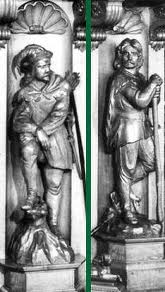
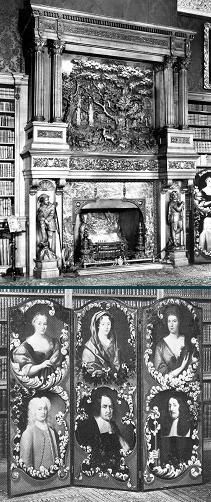 Carved oak fireplace in the Thoresby Hall library with its depiction of the Major Oak (Robin Hood's Tree), and the screen
featuring the Cromwell family. Oliver Cromwell is known to have stayed in Thoresby Hall before the English Civil War.
Carved oak fireplace in the Thoresby Hall library with its depiction of the Major Oak (Robin Hood's Tree), and the screen
featuring the Cromwell family. Oliver Cromwell is known to have stayed in Thoresby Hall before the English Civil War.
 The Green Bridge sited near the edge of the cricket pavilion in front of Thoresby Hall across which the Duke's carriage would take him to Perlethorpe Village.
The Green Bridge sited near the edge of the cricket pavilion in front of Thoresby Hall across which the Duke's carriage would take him to Perlethorpe Village.
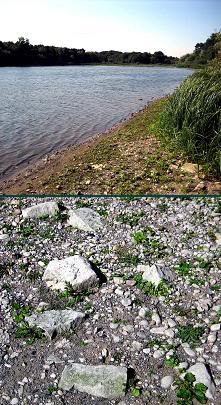 The view along Thoresby Lake towards Budby. Are these bricks at the water's edge remnants from the original Thoresby
Hall?
The view along Thoresby Lake towards Budby. Are these bricks at the water's edge remnants from the original Thoresby
Hall?
 The River Meden winds its way from 7 Ton Bridge near Thoresby Hall towards Perlethorpe Village.
The River Meden winds its way from 7 Ton Bridge near Thoresby Hall towards Perlethorpe Village.
 Budby Castle, once known as William Castle, and the River Meden winding towards Thoresby Lake under the remains of
Pierrepont Bridge, once described as classical and elegant.
Budby Castle, once known as William Castle, and the River Meden winding towards Thoresby Lake under the remains of
Pierrepont Bridge, once described as classical and elegant.
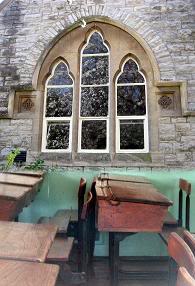
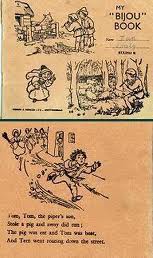 Children's exercise book from the school, 1958.
Children's exercise book from the school, 1958.
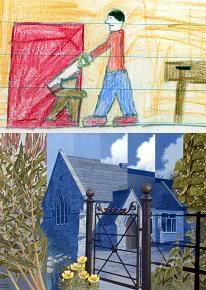
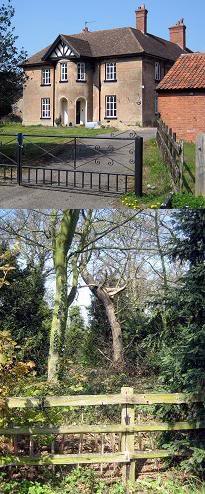



 Perlethorpe Church graveyard, where the original chapel once stood. The covered gate was a later addition in memorium to
the men of Budby and Thoresby who fell in World War 1.
Perlethorpe Church graveyard, where the original chapel once stood. The covered gate was a later addition in memorium to
the men of Budby and Thoresby who fell in World War 1.
 Robin Hood's Tree, the Major Oak, was once under the care and supervision of Thoresby Estate. Responsibility for its
upkeep changed to Nottingham City Council c.1969. Here it is pictured in in Spring, Autumn, and Winter.
Robin Hood's Tree, the Major Oak, was once under the care and supervision of Thoresby Estate. Responsibility for its
upkeep changed to Nottingham City Council c.1969. Here it is pictured in in Spring, Autumn, and Winter.
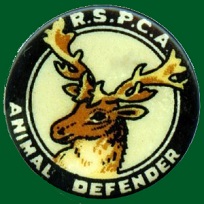
2 Comments:
Sherwood Forest, the Dukeries, Thoresby park, Thoresby Hall, history.
Pierrepont, Manvers, Dukeries, Thoresby Hall, Thoresby Hotel, Thoresby Park, Perlethorpe, Perlethorpe Village, Ollerton, Budby, Sherwood Forest.
Post a Comment
<< Home